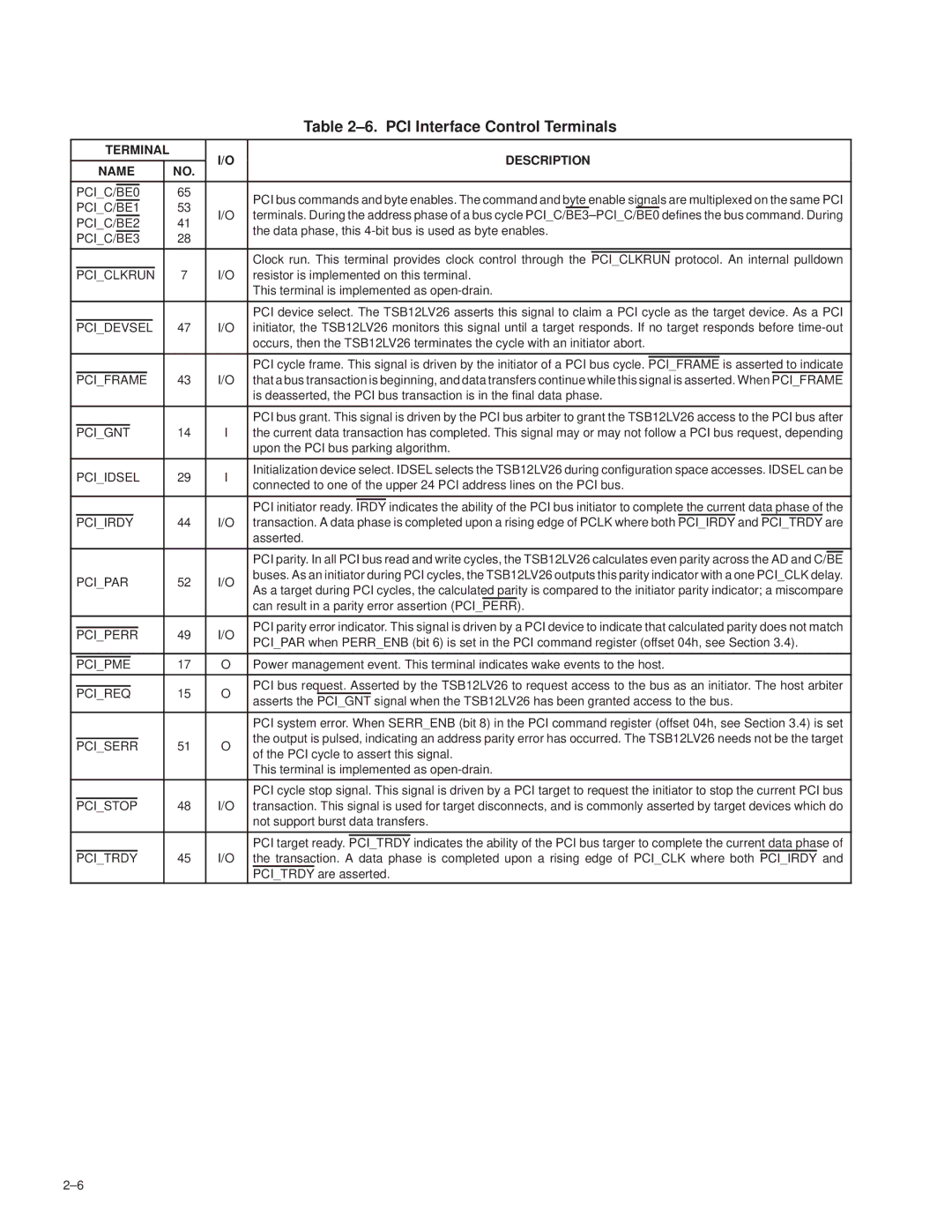TSB12LV26 specifications
The Texas Instruments TSB12LV26 is a high-performance, low-voltage transceiver designed for Serial Bus applications. It is widely recognized for its robust features and versatility, making it a popular choice among engineers and designers in various industries. One of the primary features of the TSB12LV26 is its support for high-speed data transmission, enabling it to operate at speeds up to 400 Mbps. This capability is essential for applications that demand rapid data transfer, such as in multimedia and communication systems.The TSB12LV26 is part of the IEEE 1394 standard, also known as FireWire, which is widely used for connecting devices like digital cameras, external hard drives, and printers. The chip operates within a voltage range of 2.7V to 3.6V, making it suitable for low-power applications where energy efficiency is critical. The integration of advanced Low-Voltage Differential Signaling (LVDS) technology within the TSB12LV26 enhances signal integrity and reduces electromagnetic interference, resulting in more reliable performance over longer distances.
In terms of its physical characteristics, the TSB12LV26 is available in a compact 48-pin HTQFP package, which is beneficial for space-constrained designs. The device features a comprehensive set of input and output pins, allowing for flexible connectivity options. Additionally, the TSB12LV26 includes advanced power management features, including low-power modes that help extend battery life in portable devices.
Another significant advantage of the TSB12LV26 is its capability for peer-to-peer communication, enabling devices to connect and communicate directly without the need for a central controller. This functionality supports a wide range of device configurations and simplifies system architecture. Furthermore, the transceiver offers built-in support for asynchronous and isochronous data transfer, making it adaptable for various application requirements.
The TSB12LV26 also adheres to stringent EMI and ESD protection standards, ensuring reliable operation in challenging environments. With a rich feature set, excellent performance characteristics, and compliance with industry standards, the Texas Instruments TSB12LV26 remains an ideal choice for engineers looking to implement high-speed and reliable communication in their designs. Overall, it represents a significant advancement in the field of data transmission technology, making it a preferred component for numerous electronic applications.

